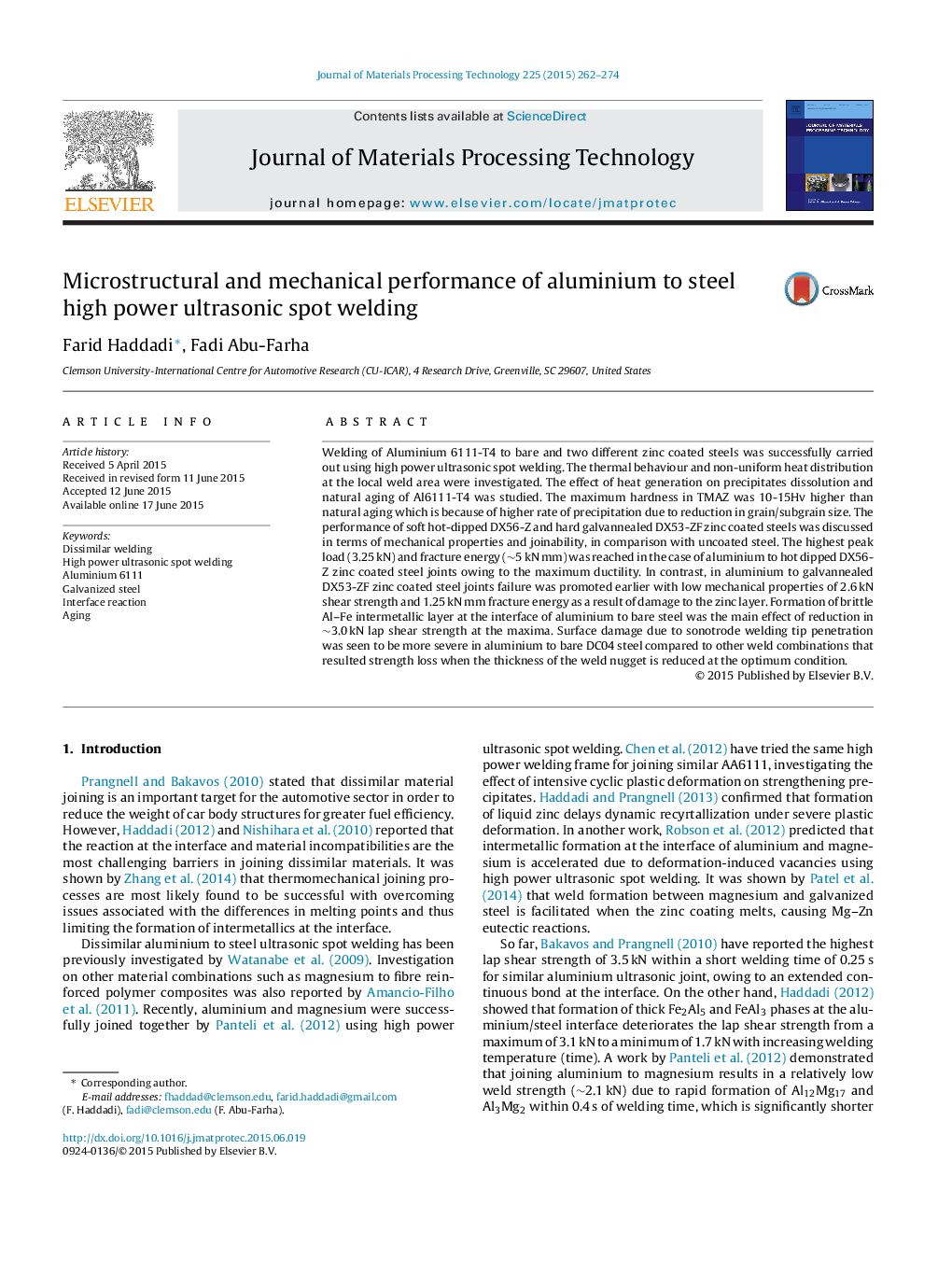| Article ID | Journal | Published Year | Pages | File Type |
|---|---|---|---|---|
| 7176975 | Journal of Materials Processing Technology | 2015 | 13 Pages |
Abstract
Welding of Aluminium 6111-T4 to bare and two different zinc coated steels was successfully carried out using high power ultrasonic spot welding. The thermal behaviour and non-uniform heat distribution at the local weld area were investigated. The effect of heat generation on precipitates dissolution and natural aging of Al6111-T4 was studied. The maximum hardness in TMAZ was 10-15Hv higher than natural aging which is because of higher rate of precipitation due to reduction in grain/subgrain size. The performance of soft hot-dipped DX56-Z and hard galvannealed DX53-ZF zinc coated steels was discussed in terms of mechanical properties and joinability, in comparison with uncoated steel. The highest peak load (3.25Â kN) and fracture energy (â¼5Â kNÂ mm) was reached in the case of aluminium to hot dipped DX56-Z zinc coated steel joints owing to the maximum ductility. In contrast, in aluminium to galvannealed DX53-ZF zinc coated steel joints failure was promoted earlier with low mechanical properties of 2.6Â kN shear strength and 1.25Â kNÂ mm fracture energy as a result of damage to the zinc layer. Formation of brittle Al-Fe intermetallic layer at the interface of aluminium to bare steel was the main effect of reduction in â¼3.0Â kN lap shear strength at the maxima. Surface damage due to sonotrode welding tip penetration was seen to be more severe in aluminium to bare DC04 steel compared to other weld combinations that resulted strength loss when the thickness of the weld nugget is reduced at the optimum condition.
Related Topics
Physical Sciences and Engineering
Engineering
Industrial and Manufacturing Engineering
Authors
Farid Haddadi, Fadi Abu-Farha,
